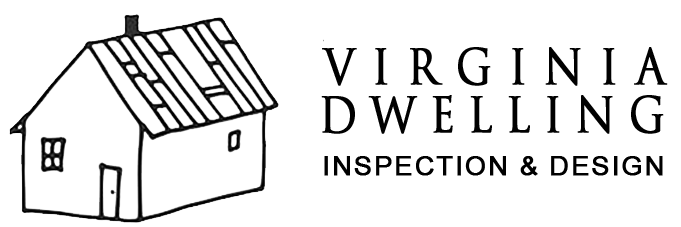Truss Me: Why Your Home Inspector Gets So Worked Up About Trusses
“I mean, that’s why they put in extras.” – An explanation I was once given as to why having multiple broken trusses wasn’t a problem.When I write a home inspection report, most of my recommendations are limited to a sentence or two – maybe three of four if especially egregious damage was found. My job is to document the condition of the house, not prescribe overly specific remedies.Reporting damage to trusses, however, requires a short paragraph of explanation, usually to the consternation of everyone involved. Why is this? Aren’t trusses just an assemblage of framing lumber like the rest of the house? What is so special about trusses that makes even the most understated inspector break into a university-style lecture?The short answer is that while trusses are part of a house’s framing just like its walls and floors, they are different creatures altogether. Think sharks and whales. Both have fins and live in the sea, but they are far from being the same. As far as I know, aquariums don’t feature shows where trainers perform acrobatic feats with sharks.What is a Truss Anyway?To really understand why damaged trusses make for longwinded home inspectors, let’s back up and establish what a truss is.Widespread use of trusses in domestic housing came as part of post-World War II building boom. The first metal plate engineered trusses were manufactured in Pompano Beach, Florida in 1952. Of course, trusses as architectural features are much older, but in houses made before the 50s, roofs are usually supported by rafter construction or trusses assembled in place. Raftered roofs are still made today and are sometimes used in conjunction with trusses, but their need for larger, more expensive cuts of lumber, skilled labor, and a longer time frame for installation limits their appeal today. Trusses, by contrast, are usually made with smaller dimension lumber (generally 2x4s), can span greater distances, arrive at the building site already assembled, and are often installed in a day or two.Along with design, the key difference is that rafters are cut and fitted on site while trusses are engineered off site. Before a set of trusses arrives at a given job, an engineer will have made all the necessary calculations to ensure the proper design for the application. This involves taking into account the strength of the materials used, the dead load (fixed weight of the roof), live load (variable load, think snow or a home inspector), and the placement of the trusses relative to the walls that will be supporting them. The trouble comes when variables change the engineered design. Changes to the Plan:Sure, truss design engineers account for variables. They anticipate changes to the live load a roof will bear: wind, snow, ice, Styrofoam reindeer, etc. and even some kinds of minor damage. The trouble for home inspectors is that a visual inspection cannot determine what is an acceptable variation and what is not. When designing a repair detail, an engineer will take into account the amount of damage found, where it is relative to the rest of the truss system, what the load on a given truss is, and even the age of the wood. In other words, a lot of nerd work has to go on behind the scenes.Further, it should be remembered that all the trusses together are a system. Damage to one part of the system affects the whole. Trusses have a lot of strength in plane, usually vertically, but they have much less strength horizontally.[1] If one or more of the trusses in the system is cut or broken, the system loses integrity in two planes: vertical and horizontal.In this dynamic, it would be a mistake to brush off what looks to be minor damage because the defect may not be as localized as it appears; the system as a whole is compromised to some degree. Think of it this way. Skeletons are also a structural systems. Some injuries are definitively detrimental and, hopefully only for a short while, render a person lame – say a broken leg. When someone breaks a leg, their mobility is very obviously limited. However, not all injuries are so obvious. For instance, a basketball player with a sprained wrist can still do most of the things he or she needs to do on the court: running, jumping, and even shooting. But the player’s total ability is diminished. Maybe a pass gets dropped because of the injured wrist or a crucial shot is missed. Further, you don’t have to be an athlete to understnad that injury, or damage in the case of trusses, often begets further injury. A downhill skier with a sore knee might injure the other leg compensating for the first injury. Likewise, if a single truss is compromised for whatever reason, the surrounding trusses have to bear more weight than they were designed to do.Unlike basketball players and downhill skiers, trusses don’t talk, so an engineer needs to assess the damage to them.Diagnosing DamageThe proper way to address a broken or otherwise damaged truss is to have a structural engineer with the appropriate credentials evaluate the situation and design a repair detail. Many repair details involve large plywood or OSB (oriented strand board) patches. Scabs (a board nailed over the damaged area) and additional nailing done on site do not constitute proper repairs. The size of the patches and even the nailing pattern used to attach them are very, very specific. When done correctly, the directions for the repair with the credentials of the engineer will actually be stapled to the repair itself as verification of legitimacy. I’ve seen them myself.Along with restoring the physical integrity of a truss, the engineer who designed the repair lends credibility to and takes responsibility for it. As I mentioned earlier, truss designers do anticipate variables and some minor damage is acceptable. Continuing the analogy, maybe the damage spotted is the equivalent of a placekicker with a sprained finger: it just isn’t a problem. The point I want to be clear about, however, is that home inspectors cannot and should not make this sort of determination during an inspection - unless your home inspector is also a qualified structural engineer with truss design credentials. And even then it would take off site calculations to determine the proper course of action. The visual signs of damage cannot be regularly correlated to severity. A small notch in one spot might be acceptable while the same sized notch a foot in one direction or another might call for extensive repairs.What Kinds of Damage do I Find?The most common types of damage I see are split wood and gusset plates that have pulled out of the members they hold together. When a truss member splits, the dimension of the material is reduced. Therefore, the amount of weight it can bear is diminished. Gusset plates (the metal face plates that hold the individual boards of a truss together) are part of the load bearing capacity of a truss but they also provide lateral stability, arresting side to side movement. When these are knocked out of place or peeled back the integrity of the truss is lost. According to the Truss Plate Institute, the gap under a plate should not exceed ten percent of the tooth length or 1/16 of an inch. That’s not a lot of movement.More dramatically but less frequently, I see where whole members have been cut out of trusses to accommodate storage or an air-handler. Many Winchester homes from 50s and 60s were retrofitted with central air in the 80s and sometimes air-handlers were crammed into small attics to the detriment of the trusses.The Pushback:The most frequent pushback I get when it comes to damaged trusses goes something like this: “You don’t just see roofs falling down, do you?”Well, actually, sometimes they do. But my encouragement for any naysayer is to avoid going straight to extremes. A whole bunch of different injuries fall between sprained finger and broken leg in terms of seriousness. The same is true when it comes to trusses. I’ll give you an example. About a year ago, I inspected a house from the late 50s off 522 south of Winchester. Sometime in the 80s central AC was added. It was a ranch style house and had a low sloped roof. The height at the middle point of the trusses couldn’t have been more than two feet. To squeeze the air-handler in the attic, the installer cut the webs (interior truss members) of four consecutive trusses.Now, the roof had not collapsed in a dramatic shower of splinters and messy mayhem, but the sheathing over the area where the trusses were cut had begun to sag. That section of sheathing was no long being supported as initially designed. When the roof got wet, water was lingering in the divot longer than elsewhere. Over the years, water had rotted the roof sheathing, rusted the air-handler cabinet, stained and damaged the ceiling over a bedroom and a hallway closet, and deteriorated the bottom chords of the trusses in the area. It was a mess. I usually don’t know, and it’s not my job to know, why a homeowner lets damage go unattended, but the point is that the compromised trusses precipitated quite a bit of damage apart from any a news-worthy collapse.Investment:A damaged truss system can be tough on the buying process. The extra assessment needed slows things down. Further, this kind of damage is frustrating because it rarely represents negligence on the home owner’s part. Most truss problems can be traced back to manufacturing, installation, or service error. I don’t pretend to have all the answers, but I will offer two thoughts. First, if you’re selling your house, a home inspector can help you get out in front of a potential stumbling block like this with a pre-sale inspection. Structural damage can bring a home sale to a grinding halt. Second, it is useful to think of any repairs, but especially structural repairs, as part of your investment in a house. The value of a given house fluctuates constantly, but properly repaired trusses are no longer an lurking liability that has to be reckoned at an inconvenient time.-Joe [1] Purlins, the horizontal members that run along the trusses in a perpendicular orientation, and the roof sheathing provide the lateral support.




